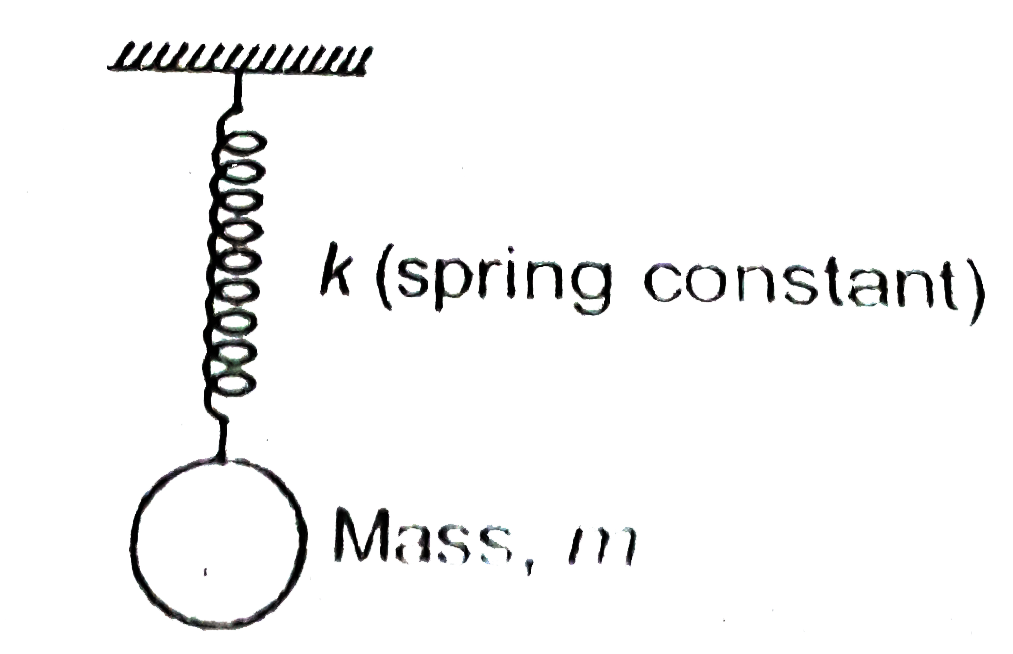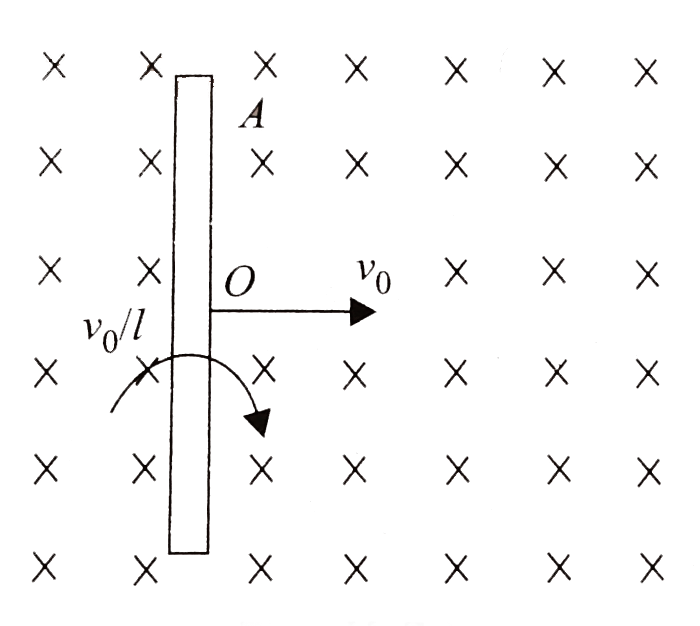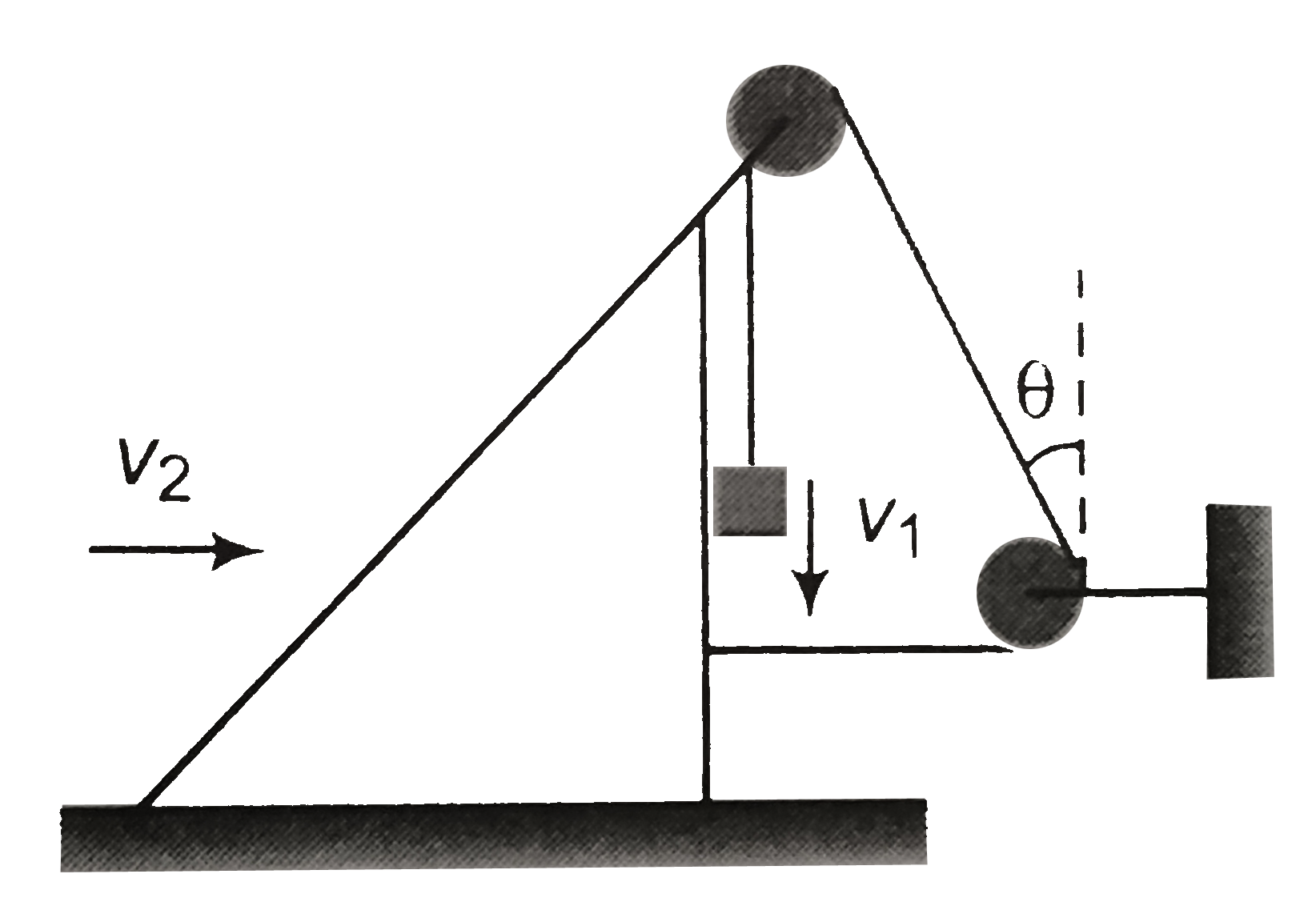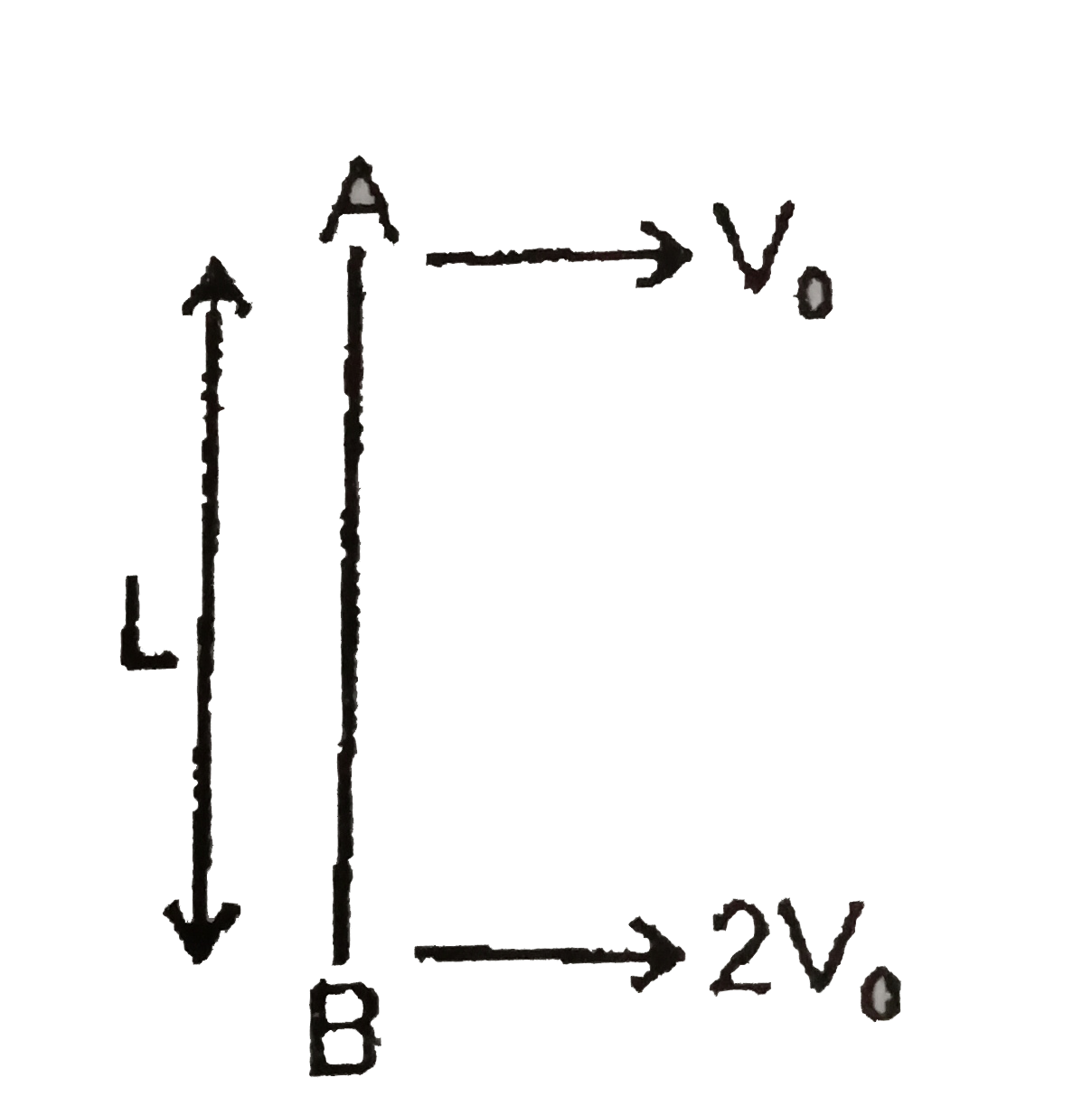A light rigid rod is placed on a smooth horizontal surface. Initially the end A begins to move vertically upward with constant velocity v0 and centre of the rod upward with a velocity v0/2 having downward acceleration a0/2, the other end moves downward with
zero initial velocity having zero acceleration
zero initial velocity having a0 downward acceleration
non-zero initial velocity and zero acceleration
none of the above
NA
Topper's Solved these Questions
Similar Questions
At the initial moment three points A, B and C are on a horizontal straight line at equal distances from one another. Point A begins to move vertically upward with a constant velocity v and point C vertically downward without any initial velocity but with a constant acceleration a. How should point B move vertically for all the three points to be constantly on one straight line. The points begin to move simultaneously.
View SolutionTime period of a spring pendulum when lift moves downward with constant velocity v is T second. When the lift moves upward with constant acceleration=g3 , the time period will be

View Solution
Knowledge Check
A bomb explodes in air in two equal fragments. If one of the fragments is moving vertically upwards with velocity v0, then the other fragment is moving-
AVertically up with velocity v0BVertically downwards with velocity v0CIn any arbitrary directionDNone of theseA conducting rod of length 1 is moving on a horizontal smooth surface. Magnetic field in the region is vertically downward and magnitude B0. If centre of mass (COM) of the rod is translating with velocity v0 and rod rotates about COM with angular velocity v0/l, then potential difference between points O and A will be
 A58B0v0lB38B0v0lC18B0v0lD12B0v0l
A58B0v0lB38B0v0lC18B0v0lD12B0v0lA uniform straight rod is placed in vertical position on a smooth horizontal surface and released. As the rod is in motion, the centre of mass moves
AhorizontallyBvertically downCin a parabolic pathDdoes not move
A uniform rod of mass M and length l is placed on a smooth- horizontal surface with its one end pivoted to the surface. A small ball of mass m moving along the surface with a velocity v0, perpendicular to the rod, collides elastically with the free end of the rod. Find:
a. the angular velocity of the rod after collision.
b. the impulse applied by the pivot on the rod during collision. (Take M/m=2)

View SolutionA uniform rod of mass m and length l rests on a smooth horizontal surface. One of the ends of the rod is struck in a horizontal direction at right angles to the rod. As a result the rod obtains velocity v0. Find the force with which one-half of the rod will act ont he other in the process of motion.
View SolutionA uniform cube of mass m and edge a moves on a horizontal surface along the positive x-axis, with initial velocity v0. Then
View SolutionIn the figure block moves downwards with velocity v1, the wedge rightwards with velocity v2. The correct relation between v1 and v2 is

View SolutionA uniform rod of mass M and length L is moving on a smooth horizontal plane, such that its one end is moving with a velocity V0 and other end is moving with velocity 2V0 in the same direction as shown. Then which of the following is kinetic energy of the rod?

View Solution
